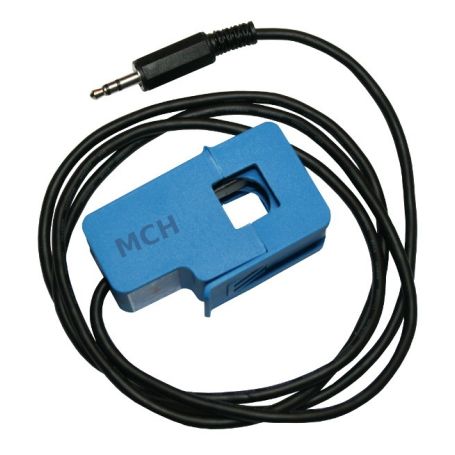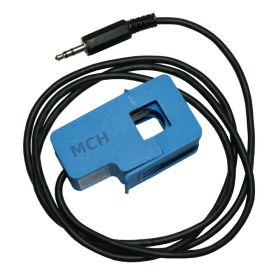AC current sensor - 30A - non invasive
Alternative Current sensor
- non invasive
- 62 Ohms burden resistor
- 30A max
Payments are secured by LyraCollect, a French payment collection company.
It is possible to delivered to your home, to a pick-up point or picked up by appointment at MCHobby
We prepare, pack and ship your orders with great respect and care.
Measure the eletric power with this non-invasive 30A clip ampmeter
Here is a CT familly sensor (Current Transformer) used to measure alternative current up to 100 Amp (we do also have a 30A version). They are great to mesure power consumption into house, building without modifying them! They are also welcome to monitor the current/power production from an autonomous power generator.
The sensor ring is splitted in two part (see product pictures), which make them easy to clip it around the the grid phase to monitor. Open the clip, place it around the power wire to monitor, close the clip.
Thank to this clip system, you can clip it on any power grid by minimising the electrical shock and without the need to shutdown it for modification.
Applications
- Great to measure current
- Monitor and protect alternative motor
- Lightning equipement
- Air compressor
Specifications
- Model: YHDC SCT-013-0030
- Input current: from 0 to 30A AC (inside the clips)
- Output: from 0 and 1V AC
- Non linearity: ±1%
- Internal measurement resistor (RL): 62Ω - also called burden resistor (already included).
- Turn Ratio: 1800:1
- Isolation: Grade B
- Working temp.: -25°C to 70°C
- Dielectric resistor: 1000V AC/1min 5mA
- Wiring: 1m
- Size: 13mm x 13mm
- Technical datasheet (pdf)
- Tech. specification (jpg)
Using the sensor
This sensor do have a "Burden" resistor in parallel with the sensor output. It transform the current into voltage (u = Rburden x Isecondaire). See our french tutorial for more details.
As this sensor act as a transformator, the sensor output is also and alternative current (and alternative voltage on the burden resistor). This means that the output signal oscillate around the zero volts (once negative, once positive, and so on).
Most of microcontrolers, like Arduino, Pyboard, Pico, etc) do have analog input. However, they don't accept negative voltage. DO NOT WIRE THIS SENSOR DIRECTLY ON MICROCONTROLER.
You must use a voltage divider to shift up the full output signal to the positive area (over 0 Volts). This is a simple voltage . See our tutorial (in french) for more details about the wiring.
Tutorials
- Using a CT sensor with Arduino (French, Wiki MCHobby.be)
Tutorial about the 30A model. - Using a CT sensor wih Arduino (English, on OpenEnergyMonitor.org)
- Study about SCT13-000 (100A) (English, OpenEnergyMonitor.org)
- How to make an energy monitor with Arduino Arduino (English, on OpenEnergyMonitor.org)
Based on the SCT-013-000 model, the smaller version. - Some additional information regarding the OpenEnergy documentation (English, ArduinoTaiShop, anglais)







